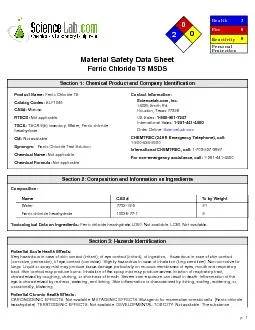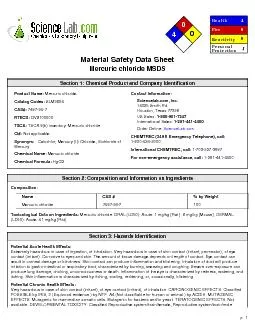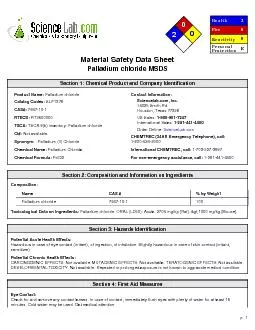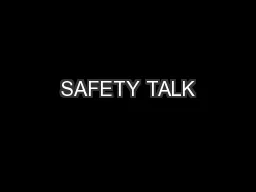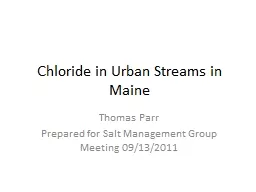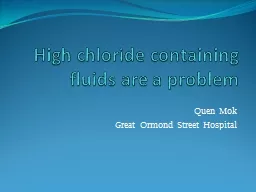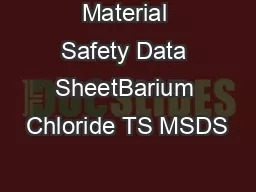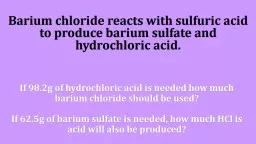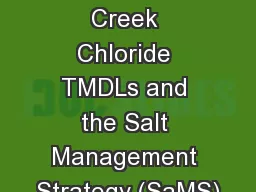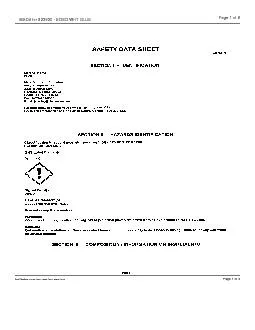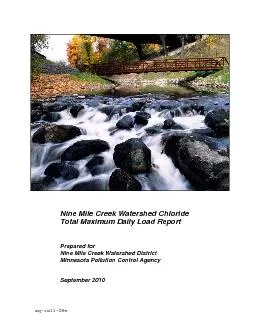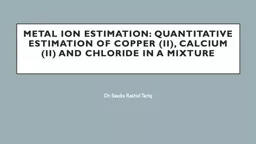PDF-Material Safety Data SheetFerric Chloride TS MSDS
Author : tawny-fly | Published Date : 2016-12-13
p 1 0 2 0 Health Fire Reactivity Personal Protection 3 0 0 Section 1 Chemical Product and Company Identification Product Name Ferric Chloride TSCatalog Codes SLF1045CAS
Presentation Embed Code
Download Presentation
Download Presentation The PPT/PDF document "Material Safety Data SheetFerric Chlorid..." is the property of its rightful owner. Permission is granted to download and print the materials on this website for personal, non-commercial use only, and to display it on your personal computer provided you do not modify the materials and that you retain all copyright notices contained in the materials. By downloading content from our website, you accept the terms of this agreement.
Material Safety Data SheetFerric Chloride TS MSDS: Transcript
p 1 0 2 0 Health Fire Reactivity Personal Protection 3 0 0 Section 1 Chemical Product and Company Identification Product Name Ferric Chloride TSCatalog Codes SLF1045CAS MixtureRTECS Not applic. He a lt h Fire Re a c t iv it y Pe rs o n a l Pro t e c t io n Material Safety Data Sheet Hydrochloric acid MSDS Section 1 Chemical Product and Company Identification Product Name Hydrochloric acid Catalog Codes S p. 1 0 4 0 Health Fire Reactivity Personal Protection 4 0 0 J Section 1: Chemical Product and Company Identification Product Name: Mercuric chlorideCatalog Codes: SLM3604CAS#: 7487-94-7RTECS: OV91000 p. 1 0 2 0 Health Fire Reactivity Personal Protection 2 0 0 E Section 1: Chemical Product and Company Identification Product Name: Palladium chlorideCatalog Codes: SLP1378CAS#: 7647-10-1RTECS: RT35000 Hazardous Communication #2. The hazardous communication standard uses two primary ways to communicate the chemical hazards to the employees: the label on the chemical container and the material safety data sheet (MSDS) or safety data sheet (SDS) as GHS is phased in. The following Safety . Thomas Parr. Prepared for Salt Management Group Meeting 09/13/2011. Chloride in the Baltimore Long-Term . E. cological . R. esearch (LTER) site. Figure 2. Relationship . between impervious surface and mean annual concentration of chloride in BES streams during a five-year period (R2 = 0.81). Sites are located along a gradient of . Quen. . Mok. Great Ormond Street Hospital. Chloride: Queen of electrolytes?. Predominantly excreted by the kidneys. 99% reabsorbed. 60% passively in proximal tubules following active sodium transport. p. 1 0 2 0 Health Fire Reactivity Personal Protection 2 0 0 G Section 1: Chemical Product and Company Identification Product Name: Barium Chloride TSCatalog Codes: SLB2362CAS#: Mixture.RTECS: Not appl If 98.2g . of hydrochloric acid is needed how much barium chloride should be used?. If 62.5g of barium sulfate is needed, how much . HCl. is acid will also be produced?. Barium chloride reacts with sulfuric acid to produce barium sulfate and hydrochloric acid. . Photo Credit: Jessie Williams. Will . Isenberg. Virginia Department of Environmental Quality. Presentation Overview. Accotink Creek Chloride TMDL. Watershed Characteristics. Project History. TMDL Development. Page 1 of 6 Item Numbers: 23820-1002, 23820-1004, 23820-1008 Page 1 of 6 Page 2 of 6 MSDS for #23820 - SOBO WHT GLUE Item Numbers: 23820-1002, 23820-1004, 23820-1008 Page 2 of 6 Page 3 of 6 MSDS for # Nine Mile Creek Watershed District Minnesota Pollution Control Agency 4700 West 77 th Street Minneapolis, MN 55435-4803Phone: (952) 832-2600 Fax: ( 952 832-2601 Nine Mile Creek Watershed Chlori Dr. Saadia Rashid Tariq. Quantitative estimation of copper (II), calcium (II) and chloride from a mixture. In this experiment the chloride ion is separated by precipitation with silver nitrate and estimated. Whereas copper(II) is estimated by iodometric titration and Calcium by complexometric titration . 1 DWGB - 3 - 17 2020 Sodium in Drinking Water INTRODUCTION AND OCCURRENCE “ Salt in drinking water ” refers to sodium and chloride levels in your well water. Every water supply co ntains s transmission in the post-synaptic membrane (GABA and glycine channels) [5-7]. In the mouse models, function of aquaporin-6 is also shown to involve chloride transport[7]. Macula densa cells perform th
Download Document
Here is the link to download the presentation.
"Material Safety Data SheetFerric Chloride TS MSDS"The content belongs to its owner. You may download and print it for personal use, without modification, and keep all copyright notices. By downloading, you agree to these terms.
Related Documents

